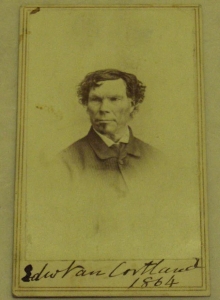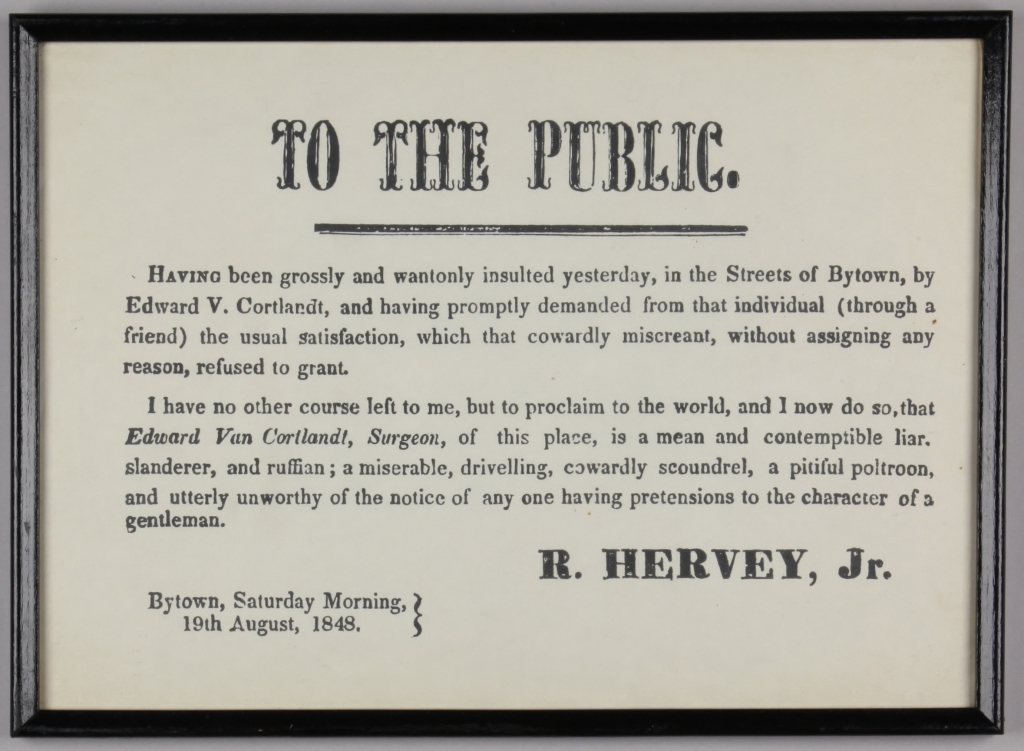Awesome Figures From Ottawa’s Past | Part 1: Edward Van Cortlandt
 by: Erin Bernauer
by: Erin Bernauer
August’s awesome figure from Ottawa’s past is Edward Van Cortlandt; he was born in 1805 in Newfoundland and died in Ottawa, Ontario on March 25th, 1875. Van Cortlandt arrived in the new frontier community of Bytown in 1833. He established a large and lucrative medical practice but still took the time to donate his services to care for the less fortunate members of the community at the Lower Bytown Hospital established by the Grey Nuns of the Cross lead by Elisabeth Bruyere. Van Courtland was active in civic duties and served as coroner of the city of Ottawa, he was also the physician for the county gaol. After the assassination of parliamentarian Thomas Darcy McGee, he was entrusted with the safe keeping of the bullet and teeth from the crime scene. If there was something important going on in Bytown there was a very good chance that Edward Van Cortlandt would be involved; his name appears in many of the records from that time.
Edward Van Cortlandt had a deep interest in the natural world and contributed greatly to the fields of geology, archeology and biology. He created a museum that was open to the public to display the geological and biological specimens he had collected from around the Ottawa area, as well as the indigenous artifacts, some of which came from the 5,000 year old indigenous burial ground he discovered along the Ottawa River. Eventually his collection was broken up and used to seed the collections of other institution such as the Smithsonian in Washington, D.C., the Redpath Museum, The McCord Museum, the Geological Survey of Canada, the Canadian Museum of Nature and the Canadian Museum of History. Van Cortlandt was the first curator in Ottawa and his work went on to help create other world famous Museums.
He was the president of the Horticultural Society and a founding member of the Ottawa Silurian Society. Due to his extensive knowledge of the geology of the Ottawa area, Van Cortlandt was asked to select the cornerstone for the center block of the original Parliament buildings and took the opportunity to promote two forms of sandstone that were easily sourced from the Ottawa area.
Figure 2: “To the Public”, 1848, Poster, Public Notice, Reproduction, Bytown Museum, D140

Van Cortlandt was considered to have an eccentric manner and could be hard to get along with; he was not one to suffer fools lightly. He may have donated his services to the poor citizens in Lower Town, but he expected his wealthier patients to pay their bills. When the Wright family failed to pay the bill for the treatment of Philemon Wight, Van Cortlandt threatened Wright’s son Ruggles.
He also had a public disagreement with Robert Hervey Jr. that resulted in a public notice being posted calling Van Cortland’s character into question. Despite this, upon his death it in 1875 his obituary stated that his “genial and warm-hearted qualities won the esteem of a large circle of acquaintances.”
Edward Van Cortlandt was one of the first early settlers in the Ottawa area, and was a very active in medical, scientific and civic roles. His hard work has left many legacies in our city.
